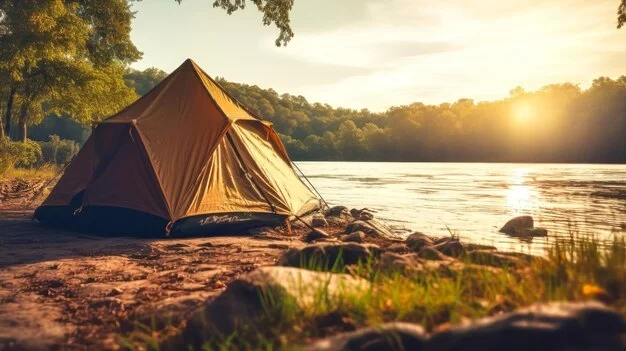Finding the Perfect Spot for Your Tent: Site Selection Tips
When it comes to camping, the most important decision you’ll make is choosing the right spot to set up your tent. A good campsite can make your experience more enjoyable, while a poorly chosen spot can lead to discomfort and even danger. Whether you're a seasoned camper or a beginner, knowing how to select the perfect location for your tent is crucial. In this article, we’ll cover the essential site selection tips that will help ensure your camping trip is a success.
- 1. Consider the Weather Conditions
- 2. Look for Flat and Even Ground
- 3. Avoid Areas with Poor Drainage
- 4. Choose a Sheltered Location
- 5. Stay Away from Potential Dangers
- 6. Proximity to Amenities
1. Consider the Weather Conditions
Before you even begin looking for a campsite, take into account the forecasted weather conditions. Is there a chance of rain, strong winds, or extreme heat? If the weather is likely to be harsh, you'll want to avoid areas that could be prone to flooding or high winds. For example, campsites in valleys can be cooler, but they might also be more susceptible to rainwater runoff. On the other hand, higher ground can offer better drainage and wind protection. Always check the weather forecast and plan accordingly for the best experience.
2. Look for Flat and Even Ground
Choosing a flat and even surface is key to ensuring a comfortable night’s sleep in your tent. If the ground is sloped, you may find yourself sliding towards one side of the tent, which can be uncomfortable and disrupt your rest. Additionally, uneven ground can cause stress on your tent’s structure, potentially leading to damage. Aim for an area with minimal rocks, sticks, or other debris that could affect your tent’s floor. Also, make sure to set up your tent away from any low spots where water may accumulate.
3. Avoid Areas with Poor Drainage
One of the worst mistakes you can make when choosing a tent site is setting up in an area with poor drainage. If it rains, water can quickly pool around your tent, leading to wet sleeping bags and uncomfortable conditions. A good rule of thumb is to look for slightly elevated ground where water is less likely to collect. Avoid setting up in gullies, depressions, or near streams, which could flood your tent in heavy rain.
4. Choose a Sheltered Location
Wind can be a major issue when camping, so it's important to pick a sheltered spot. Look for natural windbreaks like large rocks, trees, or hills that can protect you from strong gusts. A sheltered location will keep your tent more stable and ensure that you stay warm during the night. Be mindful, however, not to set up under dead trees or large branches that could fall, as they pose a safety risk.
5. Stay Away from Potential Dangers
When choosing a tent site, it’s essential to stay away from areas that could be dangerous. Avoid camping near cliffs or steep drops, as these could be hazardous in case of a sudden weather change. Also, stay clear of wildlife trails, as animals may pass through your campsite, potentially disturbing your rest. Be cautious of setting up near water sources, too, especially in areas with known wildlife like bears or alligators. Lastly, always check the area for any signs of hazardous plants like poison ivy or poison oak.
6. Proximity to Amenities
While isolation is one of the joys of camping, it’s important to also consider the proximity of essential amenities. For example, if you’re camping in a remote area, it may be useful to choose a spot that is within walking distance to water sources or nearby restrooms, especially if you are hiking with children or elderly campers. Additionally, be mindful of the distance to other campers and recreational areas to ensure that you’re not too close to other tents, but also not isolated from safety or amenities.
By keeping these tips in mind, you’ll be able to choose the perfect location for your tent and ensure a pleasant and comfortable camping experience. Remember, the right site can make a significant difference, whether you're camping solo, with friends, or with family. For more camping tips and to find the best products for your trip, visit Pine Cliff Resort for top recommendations and more.







